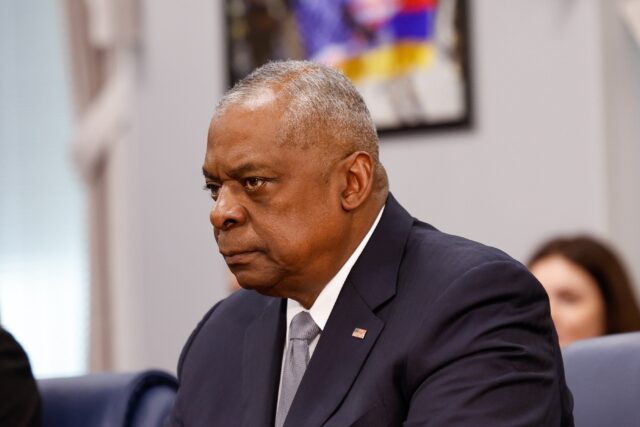China’s “coercive behaviour” threatens regional stability, US Defense Secretary Lloyd Austin said Tuesday, after Taiwan said Beijing was carrying out its biggest maritime mobilisation around the self-ruled island in years.
The Pentagon chief is in Tokyo on what will likely be his last official Asia-Pacific trip, as the United States and Japan prepare for a new era shaped by incoming president Donald Trump’s protectionist policies.
Trump, who will be sworn in next month, hopes to replace Austin with Pete Hegseth, a former military officer and Fox News presenter.
“Now we’re clear-eyed about the challenges to peace and stability in this region and worldwide,” Austin said as he met his Japanese counterpart Gen Nakatani on Tuesday evening.
“That includes coercive behavior by the People’s Republic of China in the East China Sea and the South China Sea and elsewhere in the region,” Austin said.
“It includes Russia’s reckless war of choice in Ukraine, and it includes the DPRK (North Korea) support for Moscow’s war, as well as its other destabilising and provocative activities,” he added.
Austin, who is on his 13th trip to Asia as defence secretary, vowed that “America’s extended deterrence commitment to Japan and to the Republic of Korea is ironclad”, adding that the “US-Japan alliance has never been stronger”.
He did not mention Taiwan, the self-ruled island that China claims, directly in his remarks.
Earlier in the day, a senior Taiwanese security official said nearly 90 Chinese naval and coast guard ships were in waters along the so-called first island chain, which links Japan’s Okinawa, Taiwan and the Philippines.
China regards Taiwan as its territory and has not ruled out using force to bring it under its control.
At the meeting on Tuesday, Japan’s defence minister said the regional security situation was “growing ever more severe”.
Nakatani also praised Austin for his initiative in “strengthening and cementing the deterrence of the Japan-US alliance”.
Around 54,000 US military personnel are stationed in Japan, mostly in Okinawa, east of Taiwan.
Protectionism
“These are very dynamic times,” Austin told Japanese Prime Minister Shigeru Ishiba at a separate meeting earlier on Tuesday.
“May our alliance remain the cornerstone of peace and stability in this region for the foreseeable future.”
Analysts predict that Trump’s protectionism will mean less cash from Washington for security in the region, with investors betting on Japan upgrading its own military capacities.
The country is already in the process of doubling its military spending to the NATO standard of two percent of GDP.
Having for decades relied on the United States for military hardware, Japan is also developing a new fighter jet with EU member Italy and Britain which is set to be airborne by 2035.
South Korean President Yoon Suk Yeol’s brief declaration of martial law last week, and the ensuing political turmoil, reportedly led to a planned Seoul leg being cut from Austin’s itinerary.
This “significantly undercut” the value of his Asia trip, Daisuke Kawai, deputy director of the University of Tokyo’s economic security research programme, told AFP, citing a lost last-minute chance for Washington to solidify its ties with the pair.
But the outgoing defence chief’s trip remains a chance for Washington to assure its closest ally that it “won’t abandon Japan even after Trump swings back to power”, Kawai said.
Tokyo was also keen to strengthen ties to “leave Trump less room for a policy change”, he added.

COMMENTS
Please let us know if you're having issues with commenting.